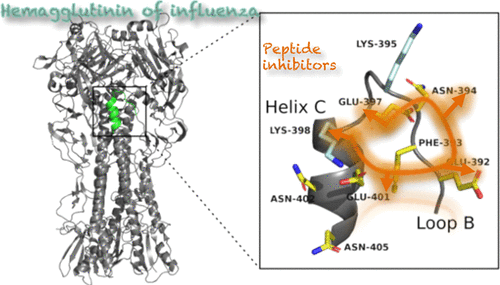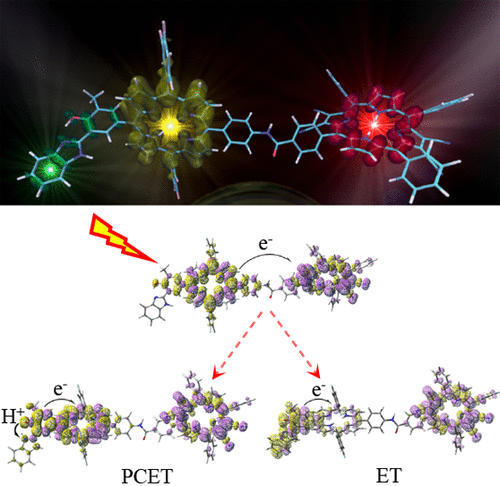In Silico Design of New Inhibitors Against Hemagglutinin of Influenza
The Journal of Physical Chemistry B 2019
DOI: 10.1021/acs.jpcb.8b10767
The RNA virus Influenza A is a serious public health problem with every year epidemics resulting in more than 250,000 deaths. A protein cavity was identified on the HA2 subunit of the hemagglutinin responsible for the entry of the virus into the host cell by endocytosis. The binding of a ligand in this zone rich in invariant residues and synthetic lethal couples, could prevent therapeutic escape and inhibit the conformational change at pH=5 initiating the membrane fusion in the endosome. Two pentapeptides, a linear peptide (EQRRS) and a cyclic peptide (DQRRD) have been proposed as potential ligands. Complex stability and the interactions between the ligand and the protein have been studied with the help of molecular dynamics and quantum chemistry methods. A high stability of the interactions has been obtained for these two ligands at both pH=7 and pH=5. Indeed, these two peptides present two cooperative modes of action that should prevent the conformational change at the origin of the spring-loaded mechanism at pH=5, (1) mechanical since they are docked on HA2, and (2) electronic since they modify the protonation states of key residues in the hairpin zone. This study thus paves the way towards the development of peptide ligands that can inhibit the membrane fusion process.





